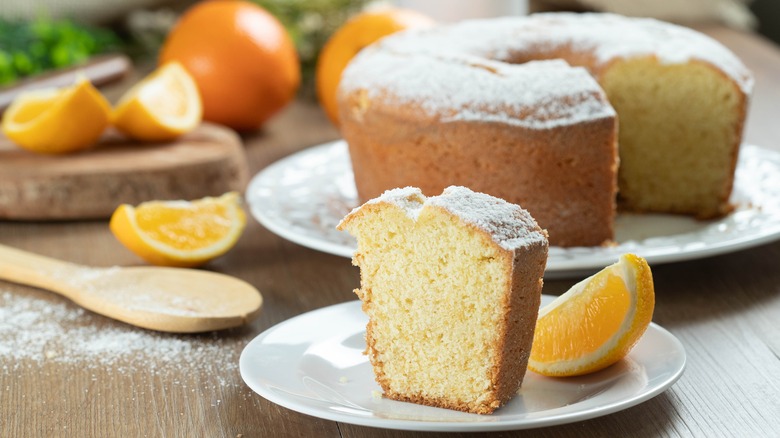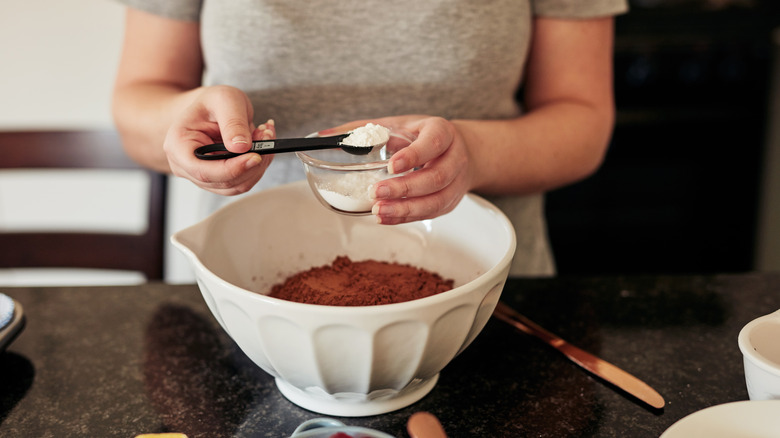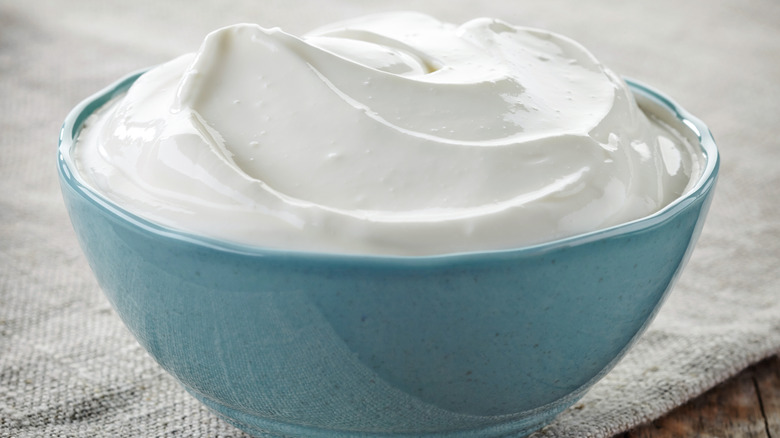The Simple Reasons Your Cake Always Has A Coarse Texture
The best cakes are light and airy with a pleasantly smooth texture. If you find that your cakes are turning out too coarse, the issue could be with how well you're incorporating ingredients. For instance, a rough, grainy texture may result when the sugar and butter (or any other form of fat) haven't been properly emulsified.
You can solve this common cake issue by creaming the butter and sugar together, which ensures that the sugar is sufficiently integrated throughout the butter. Using softened butter is also beneficial, as butter right out of the refrigerator will be harder to come apart. Add softened butter and sugar to a large bowl and cream them with an electric mixer set to medium-high speed for a stand mixer, and high speed for a hand-held mixer. Mix for about two to three minutes, making sure you don't beat the ingredients too vigorously or they may separate and cause even more texture issues. Of course, there are more cake pitfalls that can leave your desserts dry and crumbly.
Excess baking soda can create an unpleasant texture
Thanks to the chemical reaction caused by baking soda, it's an integral ingredient in many baked goods. As baking soda reacts with the other ingredients in the mixture, it creates gas bubbles that infuse with the batter or dough to create a lighter-than-air texture. However, adding too much baking soda can have the opposite effect by creating too many bubbles, which will lead to an unwanted crumbly texture.
Always follow your cake recipe closely to ensure you're using the correct amount of whatever ingredient, including baking soda, as the recipe is your best guide. As a general rule of thumb, you should only use ¼ teaspoon of baking soda for every 1 cup of flour called for in the recipe to avoid an adverse effect on the airiness of the cake batter. Along with getting portions just right, you can also enhance the texture of your finished cake by boosting the moisture in the cake batter.
Try adding a creamy ingredient
Creating a velvety smooth cake texture can be as easy as adding a moist ingredient. Sour cream is perfect in this respect, as it will enhance the texture without having a major impact on the flavor of the cake. In this case, you'll want to add sour cream to the other ingredients in your cake recipe, as opposed to substituting it for another ingredient (such as milk). For instance, adding 1 to 2 tablespoons of sour cream will eliminate dryness and help create a light, airy texture.
Sour cream is an ideal cake addition because it boosts the moisture content of the batter without causing it to become thin and brittle. Sour cream has a high fat content, which is key to creating a perfectly smooth and buttery texture. The acidic nature of sour cream is also beneficial to your cake, as it softens the gluten within the mix for a more pleasing texture. If you don't have sour cream on hand, whole-fat plain yogurt works well too.
When running into common cake issues, it helps to remember that baking is as much of a science as it is an art form. By tweaking ingredients and techniques, you can achieve the perfect texture to go along with your delicious cake.


